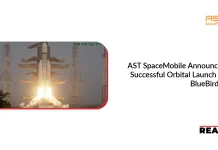In 2021, NASA completed its busiest year of development yet in low-Earth orbit, made history on Mars, continued to make progress on its Artemis plans for the Moon, tested new technologies for a supersonic aircraft, finalized launch preparations for the next-generation space telescope, and much more – all while safely operating during a pandemic and welcoming new leadership under the Biden-Harris Administration.
“At NASA, we turn science fiction into science fact, and we do it daily. From continuing to launch astronauts to the International Space Station from American soil to landing the Perseverance rover on Mars and logging the first flight on another planet, 2021 was a banner year for the world’s premier space agency and all of humanity,” said NASA Administrator Bill Nelson, who was sworn into office May 3 by Vice President Kamala Harris. “Next year, NASA will accomplish more daring feats with new discoveries and technological advancements, especially as our Artemis I mission paves the way for future crewed missions to the Moon – and beyond.”
Among the many science accomplishments for the year, NASA continued preparations to launch the James Webb Space Telescope on Dec. 24 from French Guiana, successfully landed the Perseverance rover on the surface of Mars, and piloted the Ingenuity Mars Helicopter – the first powered, controlled flight on another planet.
NASA welcomed back to Earth the first two sets of commercial crew astronauts to complete expedition missions aboard the International Space Station and launched Crew-3 to the orbiting laboratory. During the Crew-2 mission, astronauts spent a U.S. record-setting 199 days in orbit, surpassing the 168 days set by Crew-1 mission earlier this year.
The agency advanced plans to explore more of the Moon through Artemis, pledging to send the first woman and first person of color to the lunar surface. To pave the way for future lunar missions with crew, NASA completed stacking of its Space Launch System rocket, with its Orion spacecraft for the Artemis I mission launching in spring 2022. In addition to other highlights, NASA also picked SpaceX to continue the development and demonstration of the first commercial human lunar lander.




